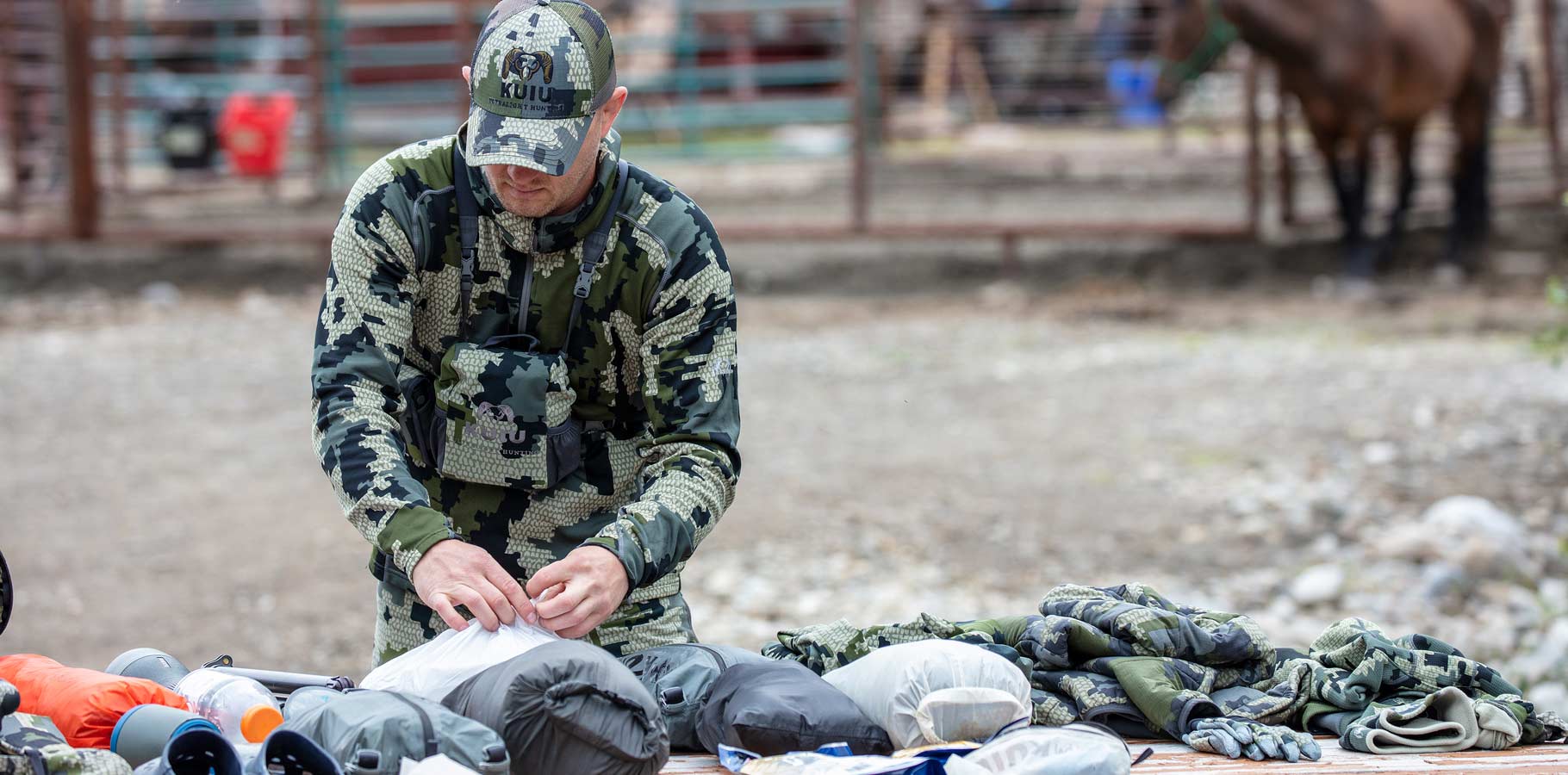
Proper Hunting Pack Organization
Having your hunting backpack or day pack organized for proper weight distribution with your least used items at the bottom and frequently used items up top can be game changing—all it takes is a little practice to work out the best places for your gear. Follow these basic principles so you’re more balanced and efficient on your next hunt.
1. LIGHT AND BULKY AT THE BOTTOM
Place lightweight, unbreakable and bulky items in the bottom of the bag—like your sleeping bag, clothes and tent placed vertically. This positions the heavier items above the hip belt and keeps delicate items from hitting the ground when you take a seat or remove the pack.
2. HEAVY ITEMS ABOVE BELT & CLOSE TO THE FRAME
Position heavier items like food and water close to the frame and lighter items away from the frame. Backpacking food will vary in weight, so position it accordingly. Having your food categorized by the number of days you’re staying and inside a roll-top or zippered dry bag is ideal.
Be mindful to not load one side of the pack heavier than the other, especially when navigating difficult terrain.

3. KEEP IT QUIET
Placing your cooking utensils, stove and fuel in one location could create unwanted noise as you hike. Consider organizing them in this section but padded with a sleeping pad, game bags or other soft items between to avoid metal-to-metal contact.
4. FREQUENTLY USED ON TOP
The top of the pack is a great place for your smaller delicate items that you may frequently use; your headlamp, GPS, radio, camera gear, etc. — while padding them with your gloves, neck gaiter and beanie.
If your pack is equipped with a removable storage lid, some hunters utilize it to store their camping items, simply detach the lid and leave it at camp when it’s time to hunt. Otherwise, the top lid may be used for water storage or frequently used smaller items.
If rain is in the forecast, consider keeping your hunting rain gear in an external pocket or close to the top of your pack—otherwise pack it deep.
5. OPTICS, TRIPODS
If you’re packing a spotting scope and tripod, they’ll likely ride better on the inside of the bag but will not be quickly accessible. Consider using the external pocketing for the spotting scope and the opposite side Stuff-It pocket for the tripod.
If you’re packing a gun or bow, attach it to the pack on the opposite side of the tripod to balance the side-to-side weight distribution and minimize noise. Lock it all down with the compression straps and you’re ready to go.
SHOP THE GEAR
Explore some of the products featured in the article.







